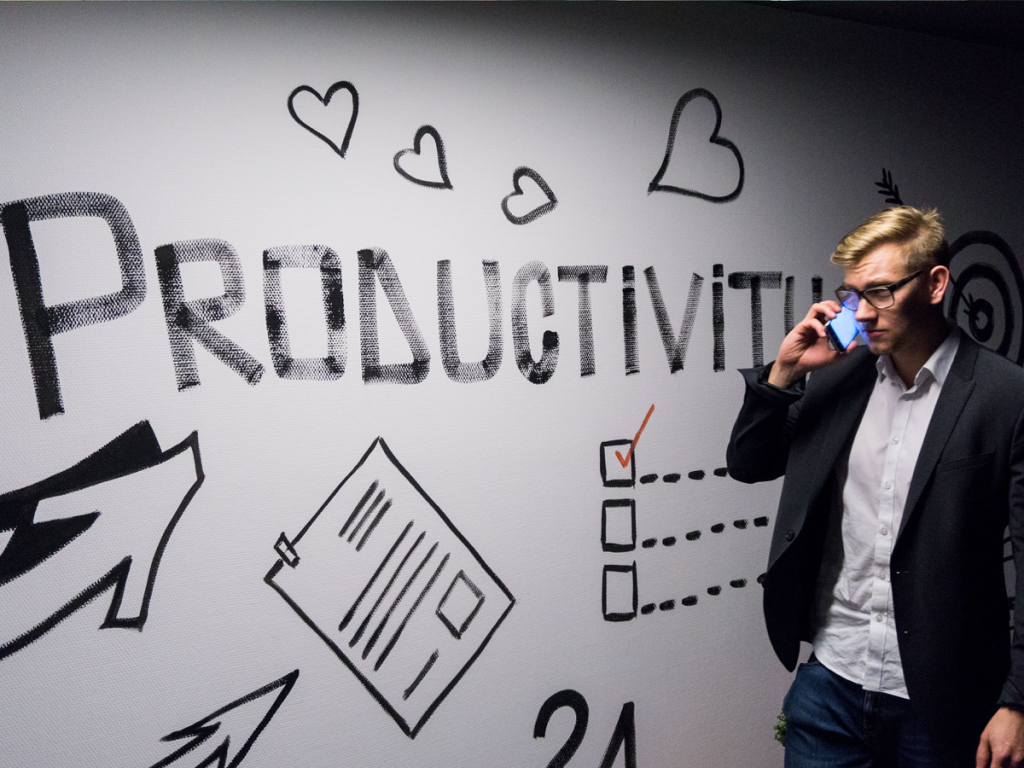Have you ever felt like you can’t slow down or stop for a moment and take a break?
Does your pain get worse when you’re stressed and have a short deadline at work, but you push through it anyway just to finish the job?
Or maybe you often stay up late to make sure your work has been done flawlessly otherwise you wouldn’t be able to sleep?

Modern life stresses and deadlines are an even bigger health hazard if you have tendencies towards perfectionism. Slow progress can feel like laziness, but learning how to pace your activities is an important part of retraining pain and living well again.
The Problem of Perfectionism
A perfectionist is someone who holds themselves to an extremely high standard. Not a standard of healthy striving for excellence, but a standard of achievement that is unrealistic.
If you’re a perfectionist, you hate when something’s not done perfectly. You’ll work tirelessly until you finish the job or find a solution to the problem. You loathe half-measures.
It also means that you’re in a constant state of tension and urgency. This anxious state can amplify pain through sensitizing your nervous system and sending danger signals to your brain.
When you feel this way it’s hard to remember that you can change your pain by slowing down and enjoying the present moment. Rushing, pushing and demanding more is your normal way of being.
My quest to fix pain; a perfectionist’s confession
Barbara’s Story
‘I remember I started experiencing pain in my right hand while preparing for an Associate Diploma in Music piano recital.
I had my date scheduled, I’ve put so much work into it already and my teacher expected me to get a very good mark.

It was my final exam, I HAD to get it done and rest was not an option. I pushed through the pain and passed receiving the highest mark. Rest did not help with the pain, so I got myself another task – getting rid of the pain.
I committed myself to physiotherapy, did all the scans and tests possible expecting a solution and swift recovery. When my efforts didn’t pay off soon enough, I’d give up. I’d get back to my normal level of activity too quickly for my body to adapt, suffer for some time, get slightly better and do it all over again.
It was another task that my perfectionist mind had to finish right away.
It wasn’t until I learned to pace my activities that I realised there was a better way to recover.’
Pain Coping Strategies

If my story (above) sounds familiar to you, then you probably fall into the “boom & bust” category of coping strategies.
Many people do what I did – trying to do more when they feel better, and then have to restrict their activities severely to make up for it.
While this is a common strategy that people use to continue their activities when they develop pain, there are also other ways that people use to cope.
You might be more of an ‘all or nothing’ perfectionist. If you can’t do something up to your very high standard, you avoid it.
Your pain comes and goes, seemingly out your control. Quitting certain activities seems like something you CAN control, but what if you don’t want to quit your job? Or you love walking your dog every day and playing tennis with friends over the weekend and you don’t want to give it up? This all or nothing thinking shuts down your opportunities to continue to live your life well.
You might try really toughing out the pain by “endurance coping”. You’re still doing exercise, work and family activities, even with high level of pain.
You’re good at drowning out the messages of pain with distractions and staying busy, and using the “mind over matter” approach that help you achieve everything you think you should get done.
No one can argue with your toughness, but this endurance coping doesn’t help to re-train your sensitive nervous system. Continuing to do meaningful activities is a very important part of recovery, but pushing through the pain is not the way to get there.
It’s not all bad news for those perfectionist tendencies! Using your task-focus and attention to detail can give you an advantage once you learn what your nervous system needs to change. Learning how to find your baseline, stick to a timing schedule, and use activity modifications allows you to “get things done” in a healthy way.

Pacing is an Essential Strategy for Pain Recovery
‘As an exercise physiologist, pacing is one of the simplest solutions we can recommend for clients who have chronic pain. But often the easiest solutions are the hardest to do.
We live in a society where products, services and needs can be met in an instant. We expect to feel better in a few days, so it’s difficult to accept that one’s ten years of chronic pain might require effort, guidance and time.
People with perfectionist tendencies tend to be committed and highly skilled at paying attention to details. Clinicians can foster their determination to return to meaningful activities, and work with their motivation to gain control back in their lives.
As healthcare professionals, it’s our job to communicate clearly that pacing is not solely to reduce pain, but to help people do more of what they want to do. When efforts are praised, small achievements are celebrated and fitness increases, pain fades more and more into the background.’
Daniel Arbilla, Exercise Physiologist from Arbilla Exercise Physiology
The Benefits of Pacing for People in Pain (especially for perfectionists!)
You might have felt how perfectionism can manifest in your body.
It causes a constant state of tension and urgency. It causes anxiety when your expectations of what you can achieve far exceed a realistic schedule. This stress and anxiety can increase the sensitivity of your nervous system, and further increases your pain.
Perfectionism makes “feel good” practices like mindfulness, cultivating joy and enjoying the present moment seem light-years away . These positive feeling activities are important for releasing “pain softening” chemicals in your brain, which help decrease pain.
Finding a balance between what you want to do, and what you can do, is a critical skill to master. Pacing allows you to set up achievable goals, reduce the severity of pain flare-ups and help calm your inner perfectionist by being more mindful, but still active, every day.
How Pacing Helps You Live Well Again
Pacing involves setting the pace for your daily activities, without avoiding or overdoing activity. It’s not about stopping doing things you love, but more about breaking them into smaller chunks and gradually increasing the amount you do.
If you’re a perfectionist, that is extremely hard to do. You’re used to giving your 100%, being productive all the time and finishing tasks quickly. You don’t like slow progress. But what if you can’t do it all at once? You feel angry and frustrated, but the truth is it does not mean you have to get lazy and stop achieving!
There are actions you can take to make pacing work for you:
- Keep doing things you love but take frequent short breaks.
- Break down your tasks into smaller bits and try to enjoy your progress.
- Gradually increase your level of activity and compare it with previous days and weeks.
These steps will give you a sense of achievement and will help you complete your day to day activities. It will take longer than usual, but pacing your activity will help you to better plan and predict the things you can achieve without significantly increasing your symptoms.
Action Steps
If you’d like to see how pacing works, try these steps:
- List the things you want to do: Think about all the activities that you’d like to do, or that you have to do. Write them down and add the amount of time you’re able to do them for comfortably without aggravating your pain. I.e walking – 15 min, or sitting in front of the computer typing – 20 min.
- Find Your Baseline: For these activities that you want to do, estimate the time that you can do them now, before you notice pain starts, or pain increases if you have constant pain. Your baseline will be about half of that time.
- Break down tasks: You don’t have to do everything at once. Let’s say you’d like to type on your laptop and work for 20 min straight. Your baseline would be 10 min and you can break it down into 5 x 2 min bits. After two minutes you’d stand up, do a few stretches, walk around the room and come back to your task.
- Increase the task a little bit each time: You will feel the urge to increase the time a lot. As a perfectionist, you feel annoyed by slow progress, but it is the key here. Try to type for 3 minutes this time and then take a break. See how you feel and increase the amount of time spent on a task by another minute the next day.
- Add some “feel good” factors: Pacing is even better if you can incorporate things that help you to feel good, and increase the flow of feel-good brain chemicals. Good music, pleasant smells, or your favourite colour in the room can help too.
- Record your progress – It will help you to see how far you’ve come and be proud of your achievements. Keeping a diary on paper, or using an app (see below) can be helpful ways of recognising your progress.
- Be patient – If you’ve been in pain for a long time, recovery will also take time. Be kind to yourself and practice self-compassion.

Learn More
Blog: Read about perfectionism and alternate ways of thinking about how you do life.
Download: here’s a factsheet on Pacing, Self-Management and Goalsetting
Blog: Pacing techniques from The Pain Tool Kit (with an instructional video)
Blog: Understand more about task persistence and flexible ways to get things done from Dr Bronnie Lennox Thompson’s Healthskill’s blog.
Read some Research: “The role of avoidance, pacing, and other activity patterns in chronic pain”
Try a paid digital product: Curable App for chronic pain management and Brain Changer for learning pacing and safety signalling.
Please note: potential conflict of interest with paid app recommendations. For Curable, PainChats author Dr David Hanscom is an advisor, and for BrainChanger, Painchats Editor Lissanthea Taylor is a paid consultant.
Barbara is a chronic pain sufferer and a certified fitness instructor living in Sydney, Australia. She changed her career from piano teaching to fitness aiming to help others understand their pain and increase their quality of life through exercise and pain science. She runs a health-oriented page on Facebook – Barbara’s Exercise Hub and you can also follow her recovery journey on Instagram.



 Self-Compassion, Self Care and Persisting Pain
Self-Compassion, Self Care and Persisting Pain

This is really good advice but I think the reason why some find it hard to implement is because unless you’ve given up work and have no dependants to run around and look after, it’s hard to start from the point of doing very little.
Hi Esther, putting pacing to work in the hustle and bustle of life is one of the biggest challenges people in pain have, and it’s tough to find yourselves with more on the plate than you can handle, whether you have pain or not. This is a very real problem, and I hope we can offer you ideas that are meaningful and doable. You might find the link to Bronnie’s post at the bottom of the page useful, and perhaps there are others that have learned ways to manage this? I’ll ask the question on the Facebook page too.
– Lissanthea, Editor